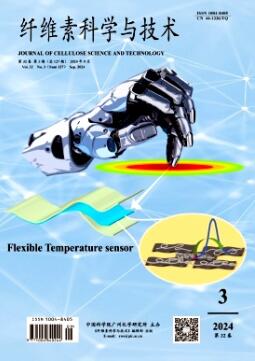Aminocelluloses - Polymers with Fascinating Properties and Application Potential
引用次数: 4
Abstract
Cellulose is a linear d-glucan containing β-1→ 4 linkages and is the world’s most abundant natural polymer with an estimated annual global production of about 1.5× 1012 tons and, hence, a very important renewable and sustainable resource [1]. Although unmodified cellulose is used largely as paper, board, and fibers, there is huge space to design novel and advanced products based on cellulose by its chemical modification. In particular, esters and ethers of cellulose are most important [1, 2]. Due to their low-cost production, biodegradability, and low-toxicity cationized polysaccharides are promising in fields of effluent treatment, papermaking, and food, cosmetic, pharmaceutical, petroleum, and textile industries, as well as in analytical chemistry and molecular biology [3]. In particular, cationic cellulose derivatives gain increasing interest in different scientific and industrial fields, e.g. as flocculation agents [4], being an alternative to toxic polyacrylamide. In Germany, the disposal of sludge treated with polyacrylamides has been forbidden in areas under cultivation since 2014 [5]. Considering the recent literature, the huge amount of publications was summarized in reviews about cationic synthetic polyelectrolytes [6] as well as cationized polysaccharides (amino and ammonium hydroxypropyl ethers) [3]. However, in this chapter, the authors will not review the cationic ethers; the overview refers to cationic esters, 6-deoxy-6-amino cellulose derivatives, and amino carbamates of cellulose. In spite of the industrial applications that are usually associated with cationic polymers, a variety of advanced polymer coatings providing sophisticated features, e.g. biosensors or immuno assays, will be presented.氨基纤维素——具有优异性能和应用潜力的聚合物
纤维素是一种含有β-1→4键的线性d-葡聚糖,是世界上最丰富的天然聚合物,估计全球年产量约为1.5× 1012吨,是一种非常重要的可再生和可持续资源[1]。虽然未经改性的纤维素主要用于纸、纸板和纤维,但通过对纤维素进行化学改性来设计新颖和先进的产品仍有很大的空间。特别是纤维素中的酯类和醚类是最重要的[1,2]。阳离子多糖具有生产成本低、可生物降解、低毒等特点,在污水处理、造纸、食品、化妆品、制药、石油、纺织等行业以及分析化学和分子生物学等领域具有广阔的应用前景[3]。特别是,阳离子纤维素衍生物在不同的科学和工业领域获得越来越多的兴趣,例如作为絮凝剂[4],作为有毒聚丙烯酰胺的替代品。在德国,自2014年起禁止在种植区域处置经聚丙烯酰胺处理的污泥[5]。结合近年来的文献,综述中总结了大量关于阳离子合成聚电解质[6]以及阳离子化多糖(氨基醚和羟丙基铵醚)[3]的出版物。然而,在本章中,作者将不回顾阳离子醚;概述了阳离子酯、6-脱氧-6-氨基纤维素衍生物和纤维素的氨基氨基甲酸酯。尽管工业应用通常与阳离子聚合物有关,但将提出各种先进的聚合物涂层,提供复杂的功能,例如生物传感器或免疫测定。
本文章由计算机程序翻译,如有差异,请以英文原文为准。
求助全文
约1分钟内获得全文
求助全文
来源期刊

纤维素科学与技术
纤维素及相关领域
自引率
0.00%
发文量
1309
期刊介绍:
Journal of Cellulose Science and Technology is an official academic journal approved by the former General Administration of Press and Publication of the People's Republic of China (GAPP) and is openly circulated both at home and abroad.
Journal of Cellulose Science and Technology is listed in Chemical Abstracts (CA), China Academic Journal Comprehensive Evaluation Database, JST (Japan Science and Technology Agency) Database (Japan) (2018), China Science Citation Database (CSCDB), China Science Citation Database (CSCD), and Japan Science and Technology Organization (JSTO) Database (Japan) (2018). ) (2018)”, ‘China Science Citation Database’, ‘China Core Periodicals (Selection) Database’, ‘China Periodicals Full Text Database’, ”China Academic Journal Network ”, “China Academic Journals (CD-ROM Edition)”, “Wanfang Digital Journal Group” and “Chinese Science and Technology Journal Database”, “The Fifth Guangdong Outstanding Journals (2018) “ etc.
 求助内容:
求助内容: 应助结果提醒方式:
应助结果提醒方式:


